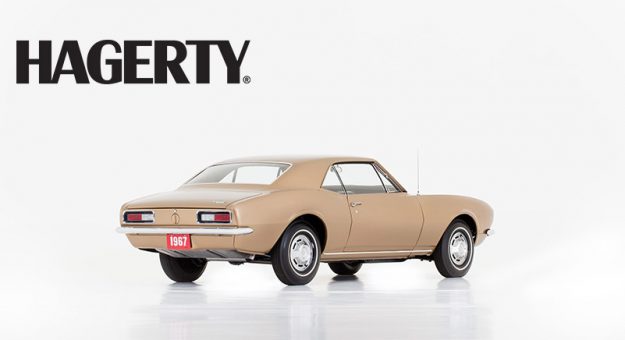By: Jeff Peek / www.hagerty.com
Throughout history, competition has always improved quality, no matter the product. So as difficult as it may be for Camaro enthusiasts to admit, we owe some gratitude to that upstart pony car from Ford. The unfathomable success of the Mustang motivated General Motors to counter punch with a sweet pony car of its own, and the result was a fabulous four-seater with a long hood, short decklid, and prominent rear quarter panels.
Car buyers confirmed that Chevrolet hit the bullseye, as more than 220,000 Camaros were sold in its 1967 debut model year.
And it all started here. Say hello to the first-ever Chevrolet Camaro, the latest automobile featured in Up Close, the Historic Vehicle Association’s text-based, story-telling video series about vehicles in the National Historic Vehicle Register.
Camaro N10001 was built in complete secrecy at Chevrolet’s Norwood, Ohio, plant in 1966. It was the first in a series of 49 “Pilot Prototypes” created to test and develop new production techniques for GM’s latest creation, and it was originally named Panther. GM changed the name to Camaro at the last minute, stating “The Panther is dead; long live the Camaro.” Granted, it’s one of those names that just sounds cool.
Regardless, N10001 is virtually the most basic Camaro you could buy in ’67. The pony car has a 230-cubic-inch six-cylinder engine (single carburetor, 140 horsepower, 220 lb-ft of torque), a column-shift three-speed transmission, and bucket front seats. It also features a few options like push-button radio, wheel discs and Firestone whitewall tires, and deluxe seatbelts. And, following GM’s tradition of building the first new model of any line as a gold over gold spec, N10001 wears Grenada Gold paint with matching interior.
The car was unveiled to the public on August 25, 1966 in Detroit, and after a short promotional tour was sent to a Chevrolet dealer in Yukon, Oklahoma, where it remained for several years. The Camaro changed hands several times over the decades until Al Tepke bought it in 1982 and turned it into a drag racer. Despite highly modifying the Camaro for competition, Tepke kept all of its original parts.
The Lawson family, current owners of N10001, had it completely restored by Dave Hanna of Sterling Classics in Kansas and worked with the GM Heritage Center, GM engineers, and the car’s previous owners to uncover its history and track down other Pilot Car Camaros.
In 2016, Chevrolet Camaro N10001 became the 15th vehicle added to the National Historic Vehicle Register.
